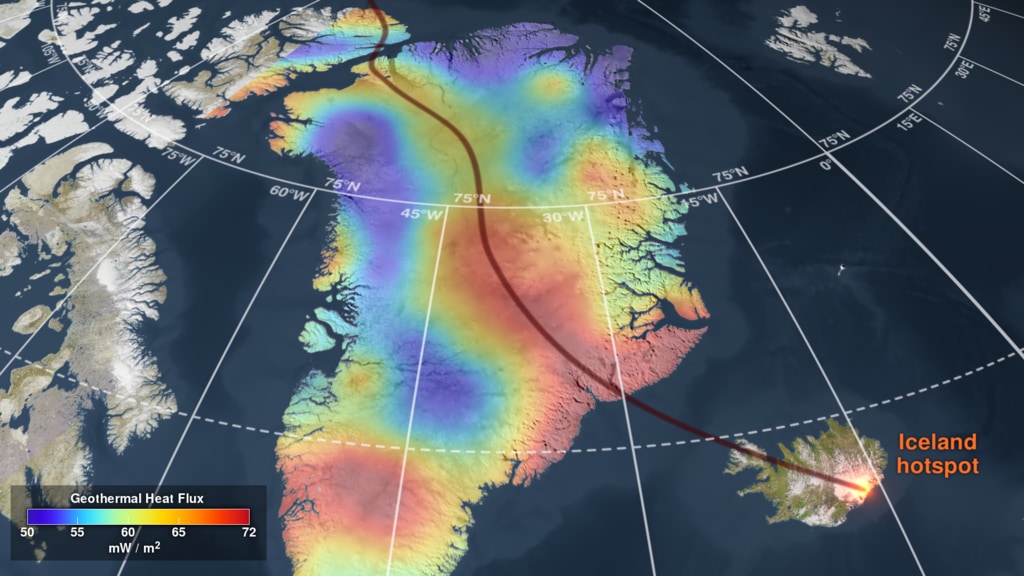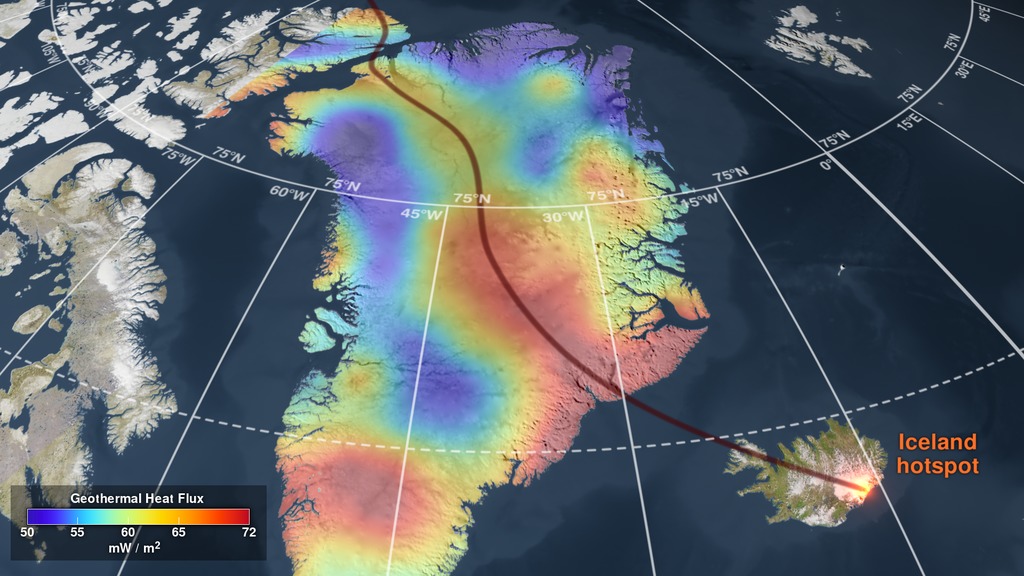NASA Scientist Reveals Greenland's Geologic Past
A new map of Greenland's geothermal heat flux is helping to reveal the path of the North American tectonic plate over geologic time. Complete transcript available.
Watch this video on the NASA Goddard YouTube channel.
Music Provided by Killer Tracks: "Valfri" by James Alexander Dorman
We tend to think of Earth's landmasses as being fixed in place, but in reality they are attached to moving tectonic plates that constantly jostle for position. In some areas these tectonic plates slide over a hotspot – an upwelling of magma from deep in the mantle that can leave behind a geologic "scar" in the crust.
Now, a NASA scientist and her colleagues have used anomalies in Greenland's crustal magnetic field to derive its geothermal heat flux, allowing them to effectively peer beneath Greenland's thick ice sheet and into the crust itself. What they found was a thermal track in Greenland's bedrock that records the motions of the North American tectonic plate over geologic time.
This finding helps scientists to better understand the movement of Greenland, as it was slowly pushed over the hotspot that is now located under neighboring Iceland. It also serves as a reminder that nothing stands still over geologic time, and that even the largest landmasses are constantly being reshaped by our dynamic planet.
Learn more about this finding.

This map of geothermal heat flux under the Greenland ice sheet was derived from anomalies in the island's crustal magnetic field. Warmer areas coincide with the northwest movement of Greenland over the present-day Iceland hotspot. The black line indicates the hotspot's relative path, beginning underneath Ellesmere Island approximately 100 million years ago, passing beneath Greenland for tens of millions of years, and ending underneath Iceland today.
For More Information
See NASA.gov
Credits
Please give credit for this item to:
NASA's Goddard Space Flight Center
-
Scientist
- Yasmina Martos (University of Maryland College Park)
-
Producers
- Dan Gallagher (USRA)
- Jefferson Beck (USRA)
-
Animators
- Ernie Wright (USRA)
- Dan Gallagher (USRA)
-
Science writer
- Lonnie Shekhtman (ADNET Systems, Inc.)
-
Narrator
- Dan Gallagher (USRA)
-
Project support
- Rich Melnick (KBR Wyle Services, LLC)
-
Support
- Aaron E. Lepsch (ADNET Systems, Inc.)
Release date
This page was originally published on Wednesday, August 1, 2018.
This page was last updated on Wednesday, May 3, 2023 at 1:46 PM EDT.

